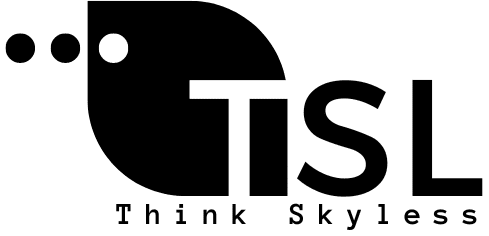
Effective retirement savings strategies are crucial for ensuring financial security in later years. Whether someone is just starting their career or is nearing retirement age, it is never too early or too late to begin implementing effective strategies such as using 401k withdrawal calculator for retirement savings.
One of the most important strategies for retirement savings is to start saving as soon as possible. The earlier someone begins saving for retirement, the more time their money has to grow and compound. Even small contributions can add up over time and make a significant difference in the long run.
Another effective strategy for retirement savings is to take advantage of employer-sponsored retirement plans, such as 401(k) plans. Many employers offer matching contributions, which can significantly increase retirement savings. Additionally, contributing to tax-advantaged retirement accounts, such as IRAs, can also provide significant tax benefits.
Types of Retirement Accounts
https://www.youtube.com/watch?v=QyAxMOPA7Z0&embed=true
When it comes to saving for retirement, there are several types of accounts that individuals can use to build their portfolio. Here are some of the most popular options:
Traditional and Roth IRA
Individual Retirement Accounts (IRAs) are a type of retirement account that individuals can set up on their own. The two most common types of IRAs are the traditional IRA and the Roth IRA. With a traditional IRA, contributions are tax-deductible, and the money grows tax-deferred until it is withdrawn in retirement. With a Roth IRA, contributions are made with after-tax dollars, but the money grows tax-free and can be withdrawn tax-free in retirement.
IRA contribution limits for 2023 are $6,000 for individuals under 50 and $7,000 for individuals over 50.
401(k) and 403(b) Plans
401(k) and 403(b) plans are employer-sponsored retirement plans. With a 401(k), employees can contribute a portion of their salary to the plan, and employers may also make contributions on their behalf. The money in the plan grows tax-deferred until it is withdrawn in retirement.
The contribution limit for 401(k) plans in 2023 is $22,500, with an additional catch-up contribution of $7,500 for individuals over 50. The contribution limit for 403(b) plans is the same.
Self-Employed Retirement Plans
For self-employed individuals, there are several retirement plan options available. These include Solo 401(k) plans, SEP IRAs, and SIMPLE IRAs. With a Solo 401(k) plan, self-employed individuals can make contributions as both the employer and the employee. With a SEP IRA, contributions are made by the employer only. With a SIMPLE IRA, both the employer and the employee can make contributions.
It is important to consider factors such as investing goals, risk tolerance, and cash flow when selecting a retirement account. By choosing the right account and making regular contributions, individuals can build a solid retirement portfolio and enjoy a comfortable retirement.
Maximizing Contributions
One of the most effective strategies for retirement savings is to maximize contributions. By contributing as much as possible to retirement accounts, individuals can increase their retirement savings and take advantage of tax benefits.
Contribution Limits
The first step in maximizing contributions is to understand the contribution limits for each retirement account. For example, in 2024, the contribution limit for 401(k) plans is $20,500 for individuals under 50 years old and $27,000 for individuals over 50 years old who are eligible for catch-up contributions.
Catch-up Contributions
Catch-up contributions allow individuals over 50 years old to contribute additional funds to their retirement accounts. This can be an effective way to increase retirement savings and make up for lost time. For example, in 2024, individuals over 50 years old can contribute an additional $6,500 to their 401(k) plans.
Company Match
Many employers offer a company match for retirement contributions. This means that the employer will match a certain percentage of the employee’s contributions, up to a certain amount. It is important to take advantage of this benefit by contributing enough to receive the full company match.
Income Limits
Some retirement accounts, such as Roth IRAs, have income limits that determine eligibility for contributions. It is important to understand these limits and consider alternative retirement accounts if necessary.
Raise
Finally, individuals can maximize contributions by increasing their contributions each year. This can be achieved by increasing contributions with each raise or by setting a goal to increase contributions by a certain percentage each year.
By understanding contribution limits, taking advantage of catch-up contributions and company matches, considering income limits, and increasing contributions each year, individuals can effectively maximize their retirement savings.
Investment Strategies for Retirement Savings
https://www.youtube.com/watch?v=igsmZ_w0gTM&embed=true
Retirement planning can be a complex process, and one of the most critical components of it is developing an effective investment strategy. This section will discuss two essential investment strategies for retirement savings: asset allocation and risk management.
Asset Allocation
Asset allocation is the process of dividing investments among different asset classes, such as stocks, bonds, and mutual funds, based on an individual’s investment goals, risk tolerance, and time horizon. A financial advisor can help determine the most appropriate asset allocation for retirement savings based on these factors.
One popular asset allocation strategy for retirement savings is the “growth investing” approach, which involves investing in stocks and other assets with high growth potential. This strategy is best suited for individuals with a long time horizon and a high risk tolerance.
Another popular asset allocation strategy for retirement savings is to invest in a mix of stocks, bonds, and mutual funds. This approach is known as a “balanced portfolio” and is designed to provide a balance of growth and income while minimizing risk.
Risk Management
Risk management is the process of identifying and minimizing potential risks in an investment portfolio. It is an essential component of retirement planning, particularly during bear markets or recessions when investments may experience significant losses.
One effective risk management strategy for retirement savings is to diversify investments across different asset classes. This approach helps to spread risk and reduce the impact of any one investment’s performance on the overall portfolio.
Another risk management strategy for retirement savings is to invest in index funds, which track the performance of a particular market index, such as the S&P 500. Index funds are a low-cost way to gain exposure to a broad range of stocks and other assets, making them a popular choice for retirement savings.
Conclusion
In conclusion, effective retirement savings is not just about putting money aside. It requires a solid strategy and consistent effort over time. The strategies outlined in this article can help individuals of all generations plan for a secure financial future.
For Millennials and Gen Z, starting early and taking advantage of compound interest can be key to building a substantial retirement nest egg. They should also consider investing in a mix of stocks and bonds to balance risk and reward.
For Gen Xers, it is important to reassess risk tolerance and investment strategies as retirement approaches. They may also want to consider alternative retirement savings options, such as annuities or rental properties.
For Baby Boomers and older generations, it is crucial to focus on maximizing Social Security benefits and managing healthcare costs in retirement. They may also want to consider downsizing or relocating to reduce expenses.
No matter what generation an individual belongs to, regular review of retirement strategies and savings rate is crucial. Additionally, seeking the advice of a financial advisor can help ensure that retirement goals are met and financial security is achieved.


